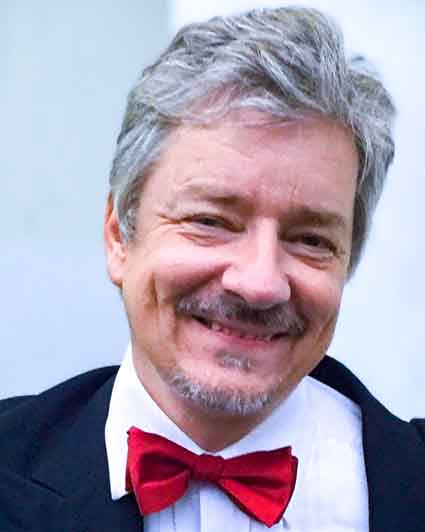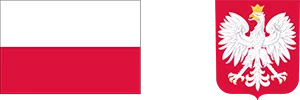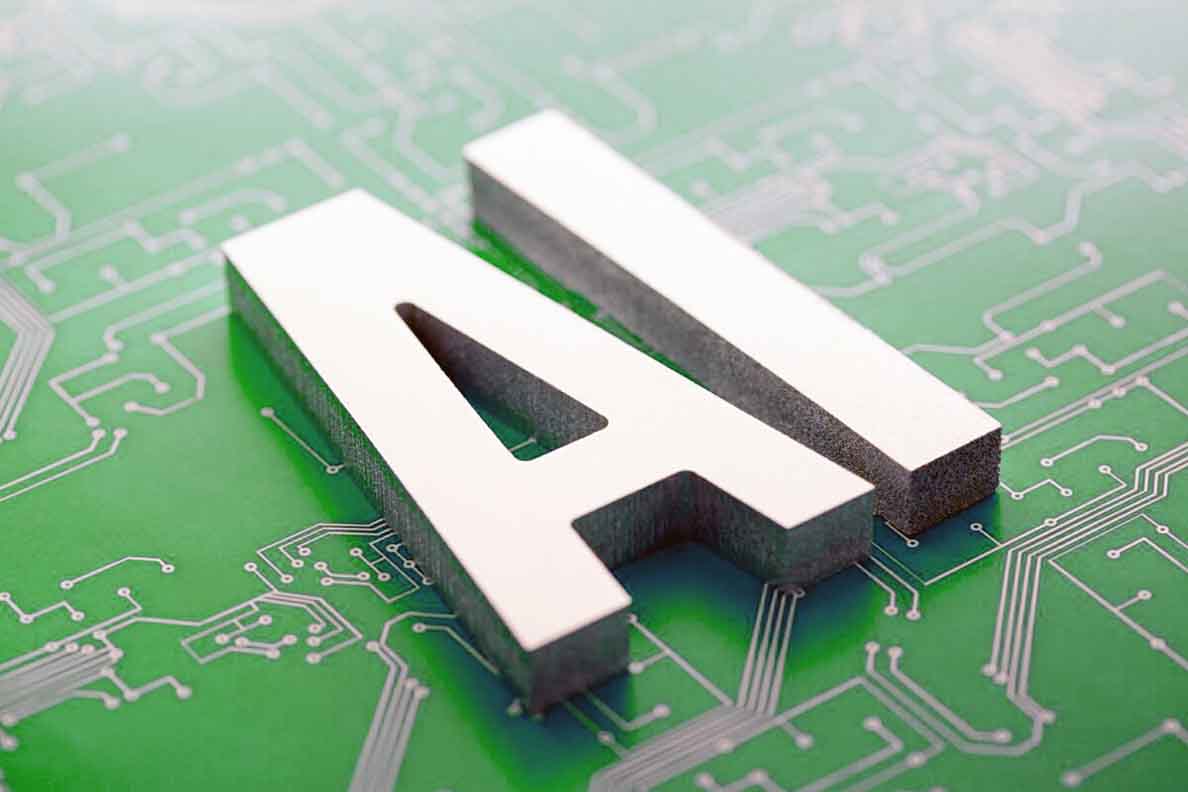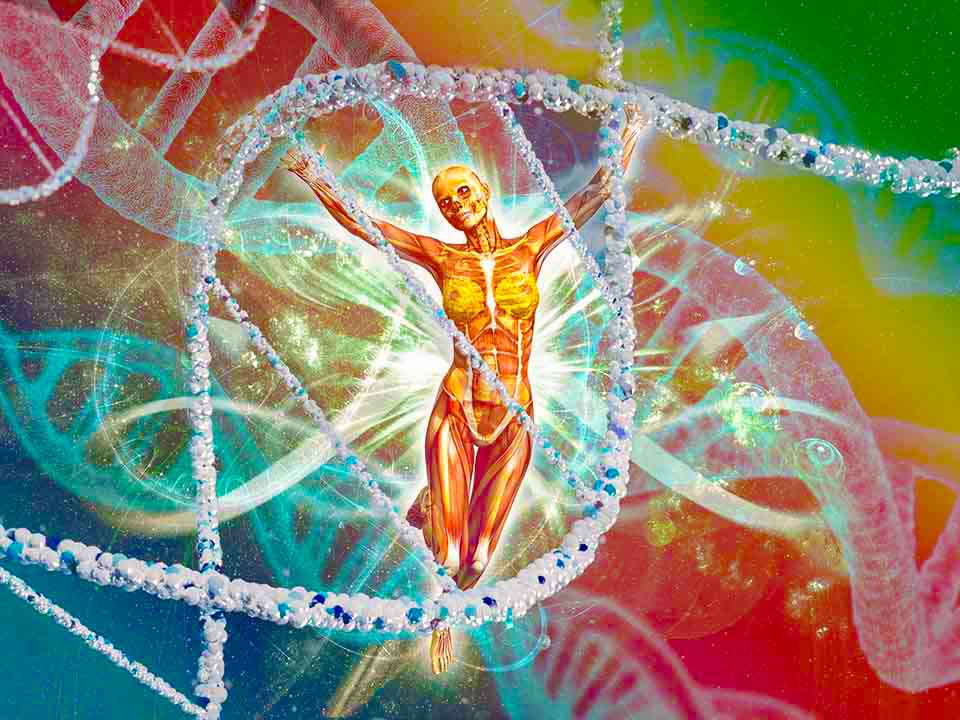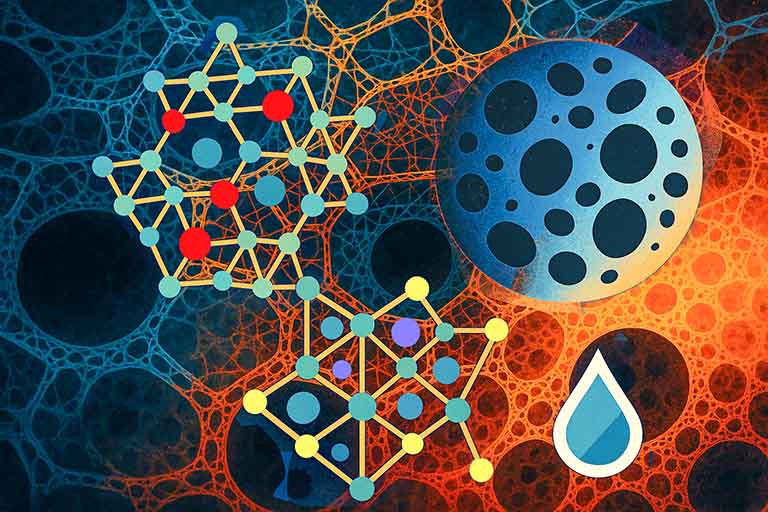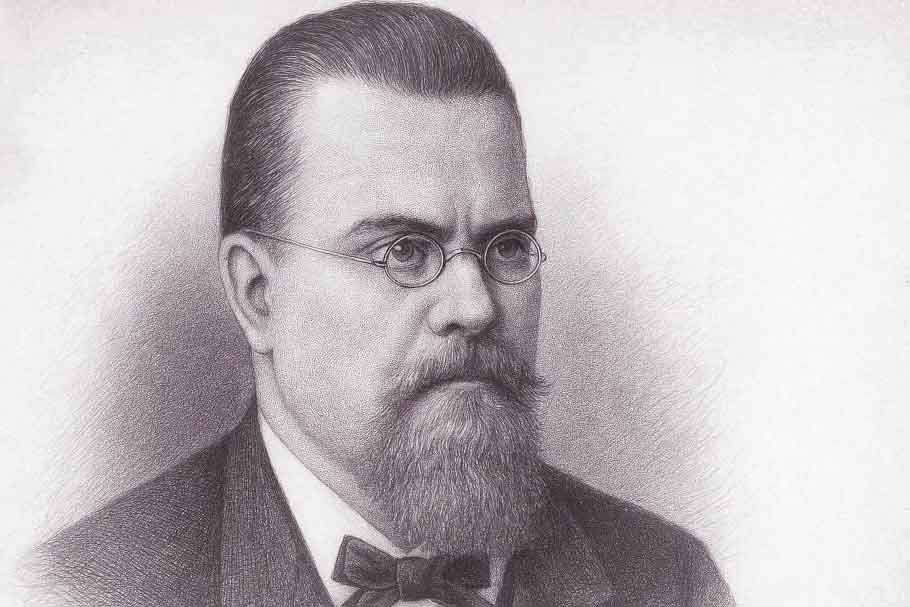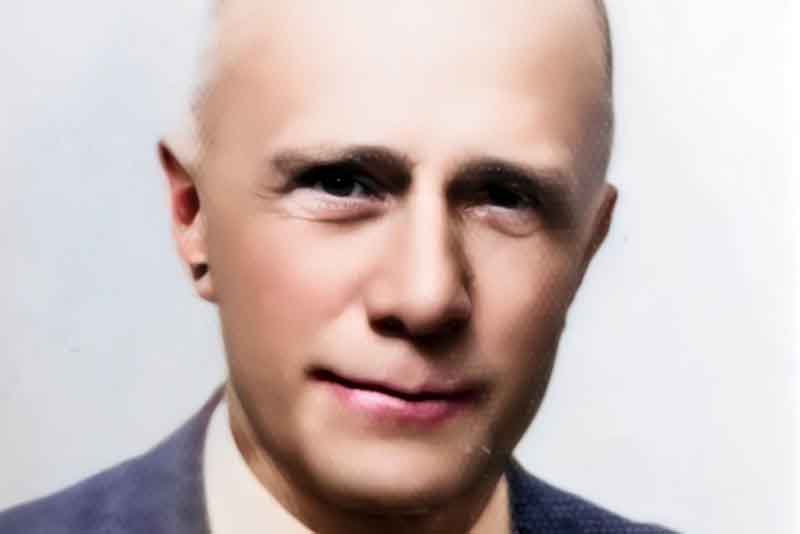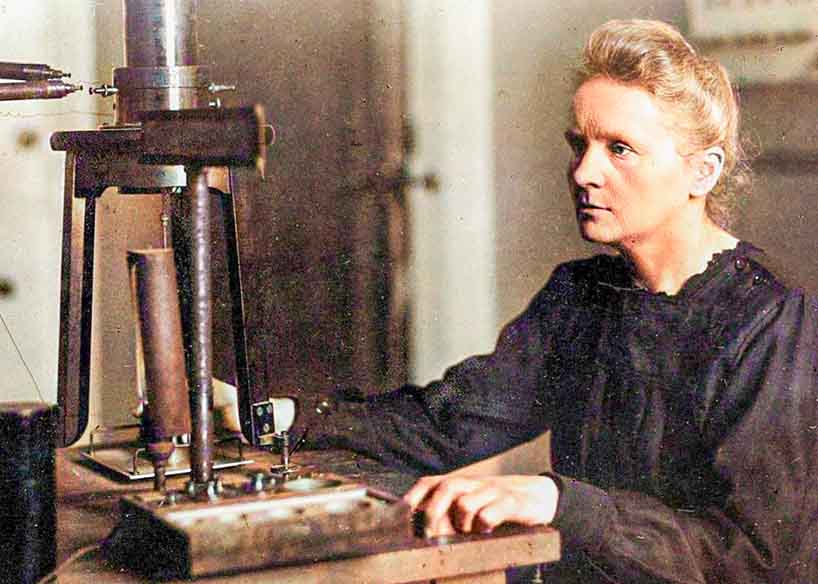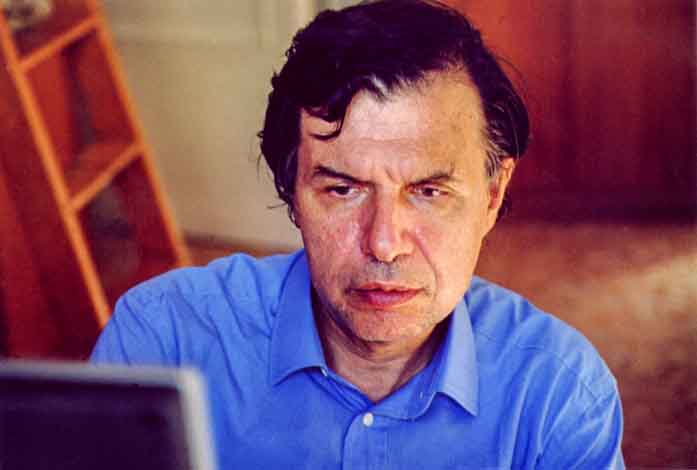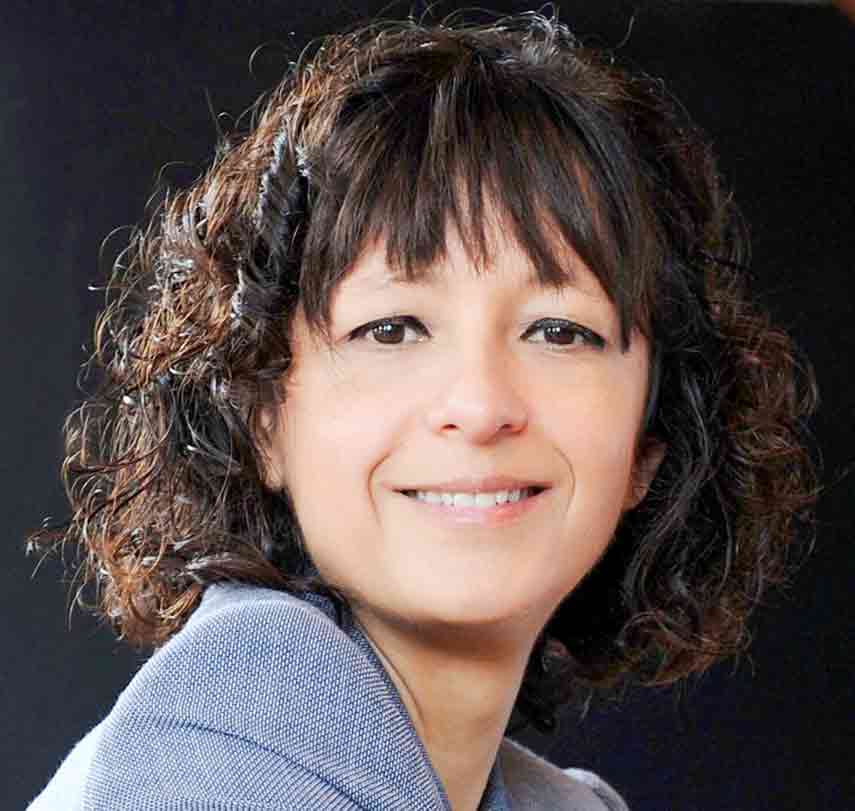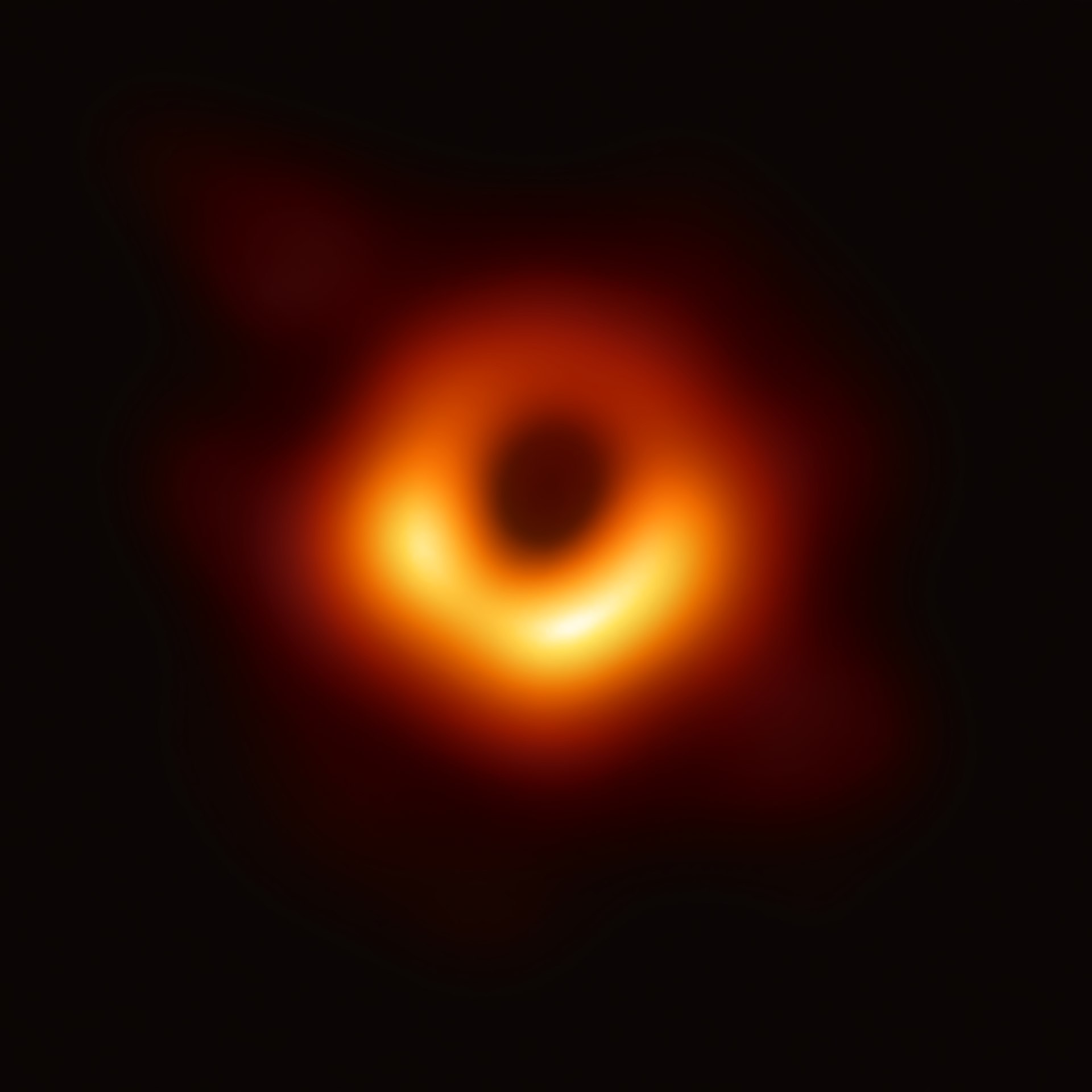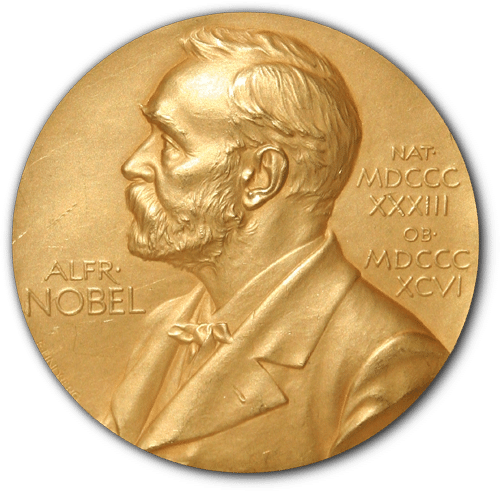In laboratories where temperatures drop to near absolute zero, physicists observe miracles that defy intuition. It was there that three winners of this year's Nobel Prize in Physics demonstrated that even an electrical circuit can behave like an atom, and that the boundary between the microscopic world and our everyday world is becoming increasingly thin.
On Tuesday, October 7 this year, the Nobel Committee in Stockholm announced the winners of the Nobel Prize in Physics: John Clarke, Michel H. Devoret and John M. Martinis were honored "for their discoveries of macroscopic quantum tunneling and energy quantization in an electric circuit."
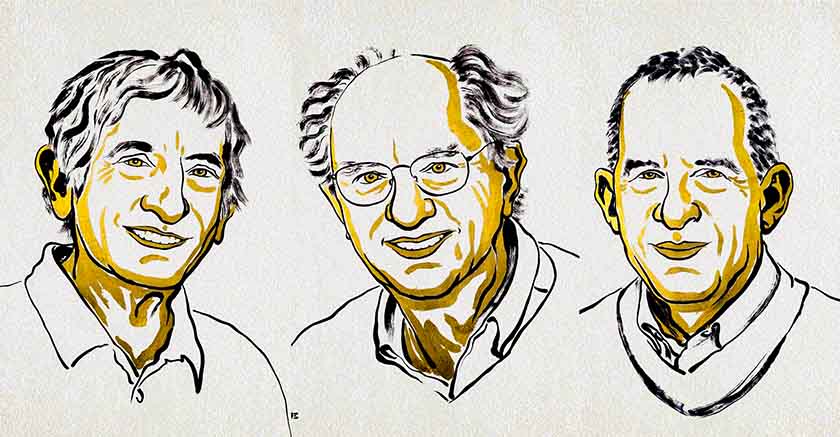
John Clarke, Michel H. Devoret and John M. Martinis, laureates of the 2025 Nobel Prize in Physics (Source: Nobel Prize Outreach, Illustration: Niklas Elmehed)
This event is not only a great scientific success, but also another example of how a seemingly abstract theory – in this case: quantum mechanics – is increasingly boldly entering the world of consumer technology.
As the Nobel Prize committee itself described it:
One of the most important questions in physics is the maximum size of a system that can demonstrate the effects of quantum mechanics. This year's Nobel laureates conducted experiments with an electrical circuit that demonstrated both quantum tunneling and quantized energy levels in a system large enough to hold in the palm of your hand.
Let us add that this Prize was awarded in a special year, because 2025 is a symbolic moment – exactly one hundred years after the birth of quantum mechanics, which revolutionized our understanding of matter and energy.
What Does This Announcement Mean?
To understand the importance of this decision, we first need to demystify a few concepts – we will try to do this in an understandable way and without excessive jargon.
Quantum Mechanics Not Only for Atoms
Quantum mechanics is a branch of physics that describes the behavior of very small particles: atoms, electrons, and photons. In the classical world—the world we know from everyday life—phenomena such as "quantum tunneling" or "superposition of states" do not occur. And yet, the laureates demonstrated that, under the right conditions, such phenomena can be observed in electrical circuits that are larger than individual atoms—hence the word "macroscopic" (though, in reality, these phenomena are still very miniature).
Quantum Tunneling – or the Ball Through the Wall
Imagine a ball rolling downhill and hitting a wall. In classical physics, the ball either bounces off or climbs the wall if it has enough energy. But in the quantum world, there's a kind of "shortcut through the wall"—a particle can "tunnel" through the barrier even though its energy wouldn't classically allow it. This is quantum tunneling.
The laureates demonstrated that in appropriately constructed superconducting electrical circuits (where resistance is almost zero) such effects occur: the circuit behaves like an "artificial atom" in which energy levels are quantized and quantum processes appear on a much more "tangible" scale than individual particles.
Energy Quantization in a Circuit
The second key concept concerns the very concept of energy levels—in an atom, an electron can only occupy certain permitted levels. In circuits, the laureates demonstrated that a similar phenomenon occurs: a circuit can transition between "numerical" energy states. This discovery was groundbreaking because it combined pure theory with engineering practice.
The laureates have, in a sense, blurred the line between the microscopic and macroscopic worlds, demonstrating that quantum laws apply not only to atoms, but also to objects visible to the naked eye. These artificial atoms have given rise to bold attempts to build practical quantum information machines.
From the electric circuit to the "artificial atom"
1. A typical electrical circuit
In our everyday world, we have current, voltage, resistors, and capacitors. Electrons flow through conductors, and their behavior is described by classical physics—the kind we learn in school.
- When we close the circuit, current flows.
- When interrupted, it stops flowing. There is no room for "quantum miracles" here.
2. The circuit becomes a superconductor
However, if we cool the circuit to a temperature close to absolute zero (approx. –273°C), the matter changes its properties:
- Current flows without any resistance (so-called superconductivity).
- The electrons combine into so-called Cooper pairs and begin to behave as one "wave".
It is conditions like these that set the stage for large-scale quantum phenomena.
3. The Josephson effect comes into play
The circuit contains a so-called Josephson junction—a thin layer of insulator between two superconductors.
What happens?
- Electrons (or rather Cooper pairs) can "jump" through an insulator without classical current flow.
- This phenomenon is called quantum tunneling—a purely quantum effect, now observable in a device with macroscopic dimensions!
The Josephson junction circuit was the first example of a so-called "artificial atom" – a large system that behaves quantumly like a single atom.
4. Quantum Tunneling – Ball Through the Wall
To understand what tunneling is:
- Imagine a ball rolling down a slope and hitting a wall.
- In the classical world, the ball will bounce and come back.
- But in the quantum world – there is a certain probability that… it will simply pass through the wall as if it were fog.
This is exactly what the laureates observed in their superconducting circuits – only instead of a ball, a wave of electrons “passes through” and instead of a wall, there is a layer of insulator.
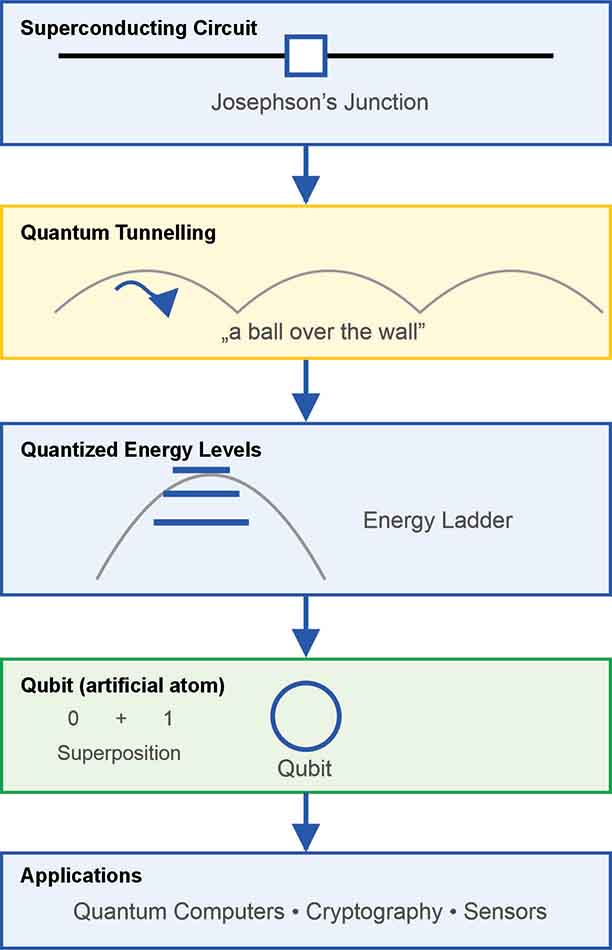
Nobel Prize in Physics 2025 — Macroscopic Quantum Effects, Josephson Circuit (Illustrated by A. Woźniewicz)
5. Energy quantization – steps instead of a ramp
In classical physics, energy can change smoothly—like a car that can travel at any speed. In the quantum world, this is not the case. Energy can only assume specific levels, so-called quantum levels, and jump from level to level, rather than change continuously.
In a superconducting circuit, instead of a smooth flow, these abrupt energy changes are observed. This is evidence that the circuit behaves like an artificial atom.
6. Josephson circuits = qubits
This discovery laid the foundations for a new field: quantum computers. In them, each such "artificial atom" is a qubit —the quantum equivalent of a bit.
- A classic bit is 0 or 1
- Qubit: 0 and 1 occur simultaneously (superposition!)
This state allows for calculations that are impossible for classical computers to achieve in a reasonable amount of time.
From Laboratory to Industry
Based on these discoveries, today we are developing:
- Google Quantum AI (where winner John Martinis worked),
- IBM Quantum,
- Rigetti,
- as well as numerous laboratories in Europe and Asia.
Their common goal: to build a stable, scalable quantum computer that will revolutionize cryptography, chemistry, medicine, and artificial intelligence.
Why Is This Important for Us – Ordinary People?
You might think, "So what if physicists are tinkering with circuits and quantum mechanics?" The answer is simple: the results of this work have—and will have—real applications. Here are some specifics:
- Quantum computers: Technologies that can solve certain tasks much faster than classical computers are based on, among other things, superconducting circuits and quantum phenomena precisely like those studied by the laureates.
- Quantum cryptography and quantum communication: In a world where digital security is becoming crucial, quantum techniques have the potential to generate truly random numbers, for example, or detect eavesdropping in new ways.
- Extremely precise sensors and measurements: Macroscopic quantum phenomena allow us to build devices that measure phenomena at the limits of technological possibilities – which may have applications in medicine (e.g. imaging studies), space technology, and fundamental research.
In short: the winners' research creates the foundation for the next generation of technology – and that means: also for economic and industrial development and everyday comfort of life.
From the Past to Today: What the Road to the Nobel Prize Looks Like
The Nobel Prize in Physics has a long and distinguished history: since 1901, the laureates have been selected by the Royal Swedish Academy of Sciences. Typically, many years pass between the discovery and the award (often decades)—because it is crucial that the results are proven, lasting, and meaningful.
Recall that the 1903 Nobel Prize in Physics was awarded to the Polish scientist Marie Skłodowska-Curie, along with her husband Pierre and Henri Becquerel, "for exceptional services in research on the phenomenon of radioactivity." It was then that Skłodowska-Curie introduced the concept of radioactivity and began research on uranium radiation. Her work demonstrated that radiation is a property of the atom itself, not the result of chemical reactions—a milestone in the development of atomic physics.
In the case of this year's Nobel Prize, the origins of this research date back to the 1980s, when experimental studies of superconductivity, Josephson circuits, and the quantum effect on a large scale, were just beginning to become possible. Laureates developed these ideas, built new types of circuits, and demonstrated theoretical predictions in the laboratory.
What's Next? Challenges and Horizons
Awarding the prize doesn't mean everything has been discovered—quite the opposite: it opens new doors. Some of the questions facing scientists and engineers include:
- How to build a scalable quantum computer that will outperform classical computers in practical tasks?
- How to ensure stability and control over quantum states in systems larger than those in the laboratory and in real conditions?
- How to integrate quantum technologies with existing infrastructure – e.g. telecommunications networks, data centers, sensors, etc.?
- How to transform laboratory achievements into enterprises, products, services – and therefore: how to make them available to the economy and society?
From the perspective of Poland (and the Polish diaspora), it is also a signal to support basic research—because it is often this that "accidentally" produces technologies of the future.
Science Is the Basis of Progress
The 2025 Nobel Prize in Physics is a triumph not so much for a single discovery as for a long process in which theory and experiment have come ever closer together—and this in a field that once seemed "purely theoretical," detached from everyday reality. Today, we see that quantum physics is no longer the domain of theoretical physicists alone, but is becoming the foundation of technologies that have the potential to change the world.
For "Kuryer Polski" it is also a signal: in times when there is so much talk about digitization, artificial intelligence, and data security, it is worth looking not only at "applications", but at the foundations — because the foundations of science often determine what will soon become the standard.
The awarded scientists and their collaborators demonstrated that consistency and ingenuity in research into the seemingly abstract world of quantum physics can yield results that, over time, transform our daily lives. The three Berkeley physicists honored this year proved that the laws of this "strange world of atoms" can be applied to the human scale. Their superconducting system—as thin as one ten-thousandth of a hair and cooled to near absolute zero—behaved like an artificial atom. These circuits later formed the first qubits—the building blocks of today's quantum computers.
This is an example of how pure research curiosity, without thinking about applications, can, years later, create a new branch of engineering.



